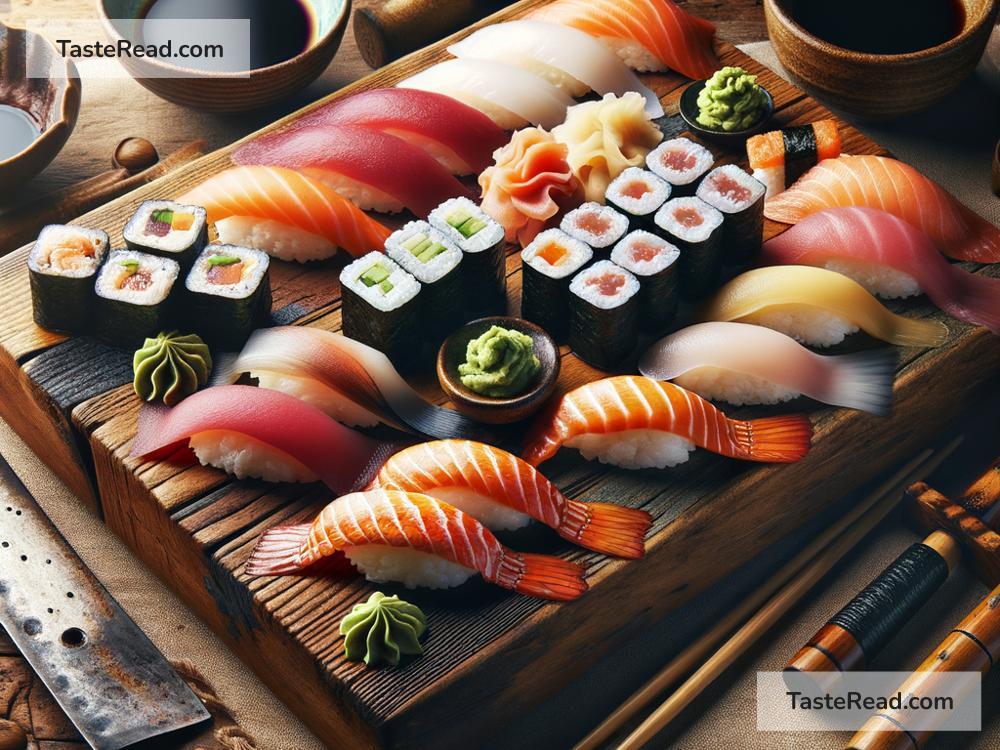The History of Sushi in Japan: A Tasty Journey Through Time
Sushi is one of Japan’s most famous foods. Today, it is enjoyed all over the world and comes in many styles. But did you know that sushi has a very long history that stretches back over 1,000 years? Let’s take a look at the story of sushi and how it became the delicious dish we know today.
Where It All Began: Sushi and Ancient Preservation
Long ago, sushi wasn’t the fresh and flavorful food we enjoy today. Around the 8th century, sushi started as a way to preserve fish. People in Southeast Asia discovered that fish could be stored for months by fermenting it with rice. This method, known as “narezushi,” involved packing cleaned fish in rice and letting it sit for a long time—sometimes up to a year. The rice acted as a preservative to keep the fish from spoiling. When it was ready, people would eat the fish and discard the rice.
In Japan, this practice became popular because it helped people safely preserve food before refrigeration existed. Narezushi had a strong smell and taste, but it was a practical and useful way to store fish for a long time.
A Shift Toward Freshness: The Birth of Sushi Rice
Over time, narezushi evolved. In the Muromachi period (14th–16th centuries), people began to eat both the fish and the rice instead of throwing the rice away. This marked a big change in how sushi was served—rice was no longer just for preservation; it became part of the meal. This type of sushi was less fermented than narezushi, and it was called “namazushi.”
Not only did namazushi taste better than earlier sushi styles, but it also took less time to prepare. It showed that people’s preferences were evolving, shifting toward fresher flavors and quicker preparation methods.
Fast Forward to Edo Era: Sushi Gets Faster and Tastier
The Edo period (1603–1868) brought even more changes. During this time, Japanese cities began to grow, and people wanted quick and convenient meals that still tasted good. This demand paved the way for “hayazushi,” which means “fast sushi.” Hayazushi didn’t rely on fermentation anymore. Instead, rice was flavored with vinegar to mimic the sourness of fermented rice, and fresh fish or seafood was paired with the rice.
Hayazushi was much faster to make and had a lighter, fresher taste. Sushi started to resemble the dish we know today, but it wasn’t quite there yet.
The Creation of Nigiri Sushi: A Bite-Sized Revolution
The sushi most of us picture today—small bite-sized portions of fish on top of rice—didn’t appear until the 19th century in Edo (modern-day Tokyo). A chef named Hanaya Yohei is credited with creating “nigiri sushi,” or hand-formed sushi, around the 1820s. Nigiri sushi was fast, portable, and didn’t require fermentation, making it perfect for busy city life.
Hanaya Yohei’s innovation became very popular, especially at street stalls called “yatai.” People could grab a quick, tasty snack while going about their day. Nigiri sushi quickly spread across Japan and later became the foundation of modern sushi. This style is still loved around the world.
Sushi Goes Global: A Moment in Modern History
For centuries, sushi remained a Japanese tradition. But in the 20th century, sushi started its journey outside Japan. After World War II, Japanese food became popular overseas, particularly in America. Sushi restaurants began to appear, serving dishes that catered to local tastes. Western inventions, like the California roll (which uses avocado and cooked crab), introduced new ingredients to sushi and helped it gain worldwide fame.
Today, sushi is enjoyed by people of all ages and cultures. Even though the styles and flavors have evolved, its roots are still deeply tied to Japan’s history. Some sushi lovers prefer traditional Japanese sushi, while others enjoy modern Western-inspired rolls. Both represent the amazing journey of sushi across time and cultures.
The Future of Sushi: A Blend of Tradition and Creativity
As sushi continues to gain popularity, new styles and ideas keep emerging. In Japan, chefs still honor ancient traditions by perfecting their craft and using the freshest ingredients. Meanwhile, around the world, sushi is being reinvented with creative twists, unique flavors, and even plant-based options for vegetarians and vegans.
While sushi has come a long way since its beginnings, its core idea remains the same: bringing people together to enjoy tasty, thoughtfully prepared food. Whether you’re eating it in Japan or abroad, sushi continues to be a reflection of history, innovation, and a passion for flavor.
Conclusion: Sushi, A Story Worth Sharing
The history of sushi is a fascinating example of how food changes with culture over time. From its humble beginnings as a method to preserve fish to its global fame as a delicious culinary art, sushi shows us how traditions adapt and grow.
The next time you enjoy sushi, think about the journey it has been on for over 1,000 years. Whether you are eating classic narezushi, nigiri, or a creative modern roll, you’re taking part in a delicious legacy born in Japan and shared with the world.
Sushi isn’t just food—it’s history served on a plate!


